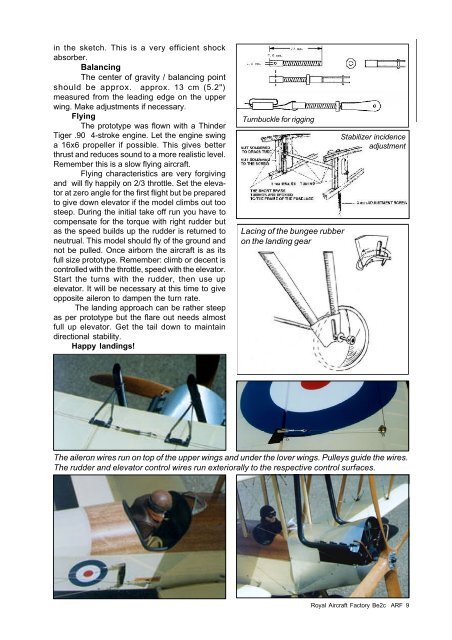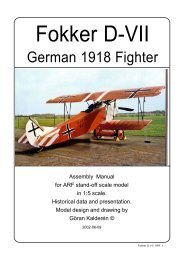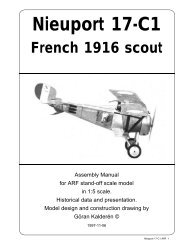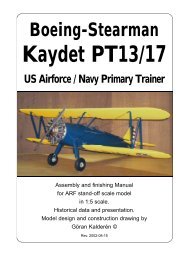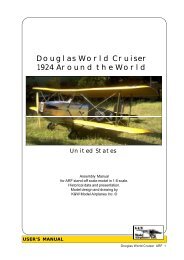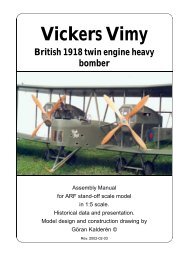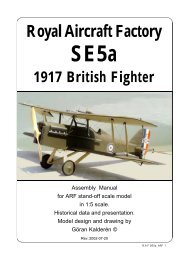RAF Be2c British Reconnaissance Aircraft from 1915
RAF Be2c British Reconnaissance Aircraft from 1915
RAF Be2c British Reconnaissance Aircraft from 1915
Create successful ePaper yourself
Turn your PDF publications into a flip-book with our unique Google optimized e-Paper software.
in the sketch. This is a very efficient shock<br />
absorber.<br />
Balancing<br />
The center of gravity / balancing point<br />
should be approx. approx. 13 cm (5.2")<br />
measured <strong>from</strong> the leading edge on the upper<br />
wing. Make adjustments if necessary.<br />
Flying<br />
The prototype was flown with a Thinder<br />
Tiger .90 4-stroke engine. Let the engine swing<br />
a 16x6 propeller if possible. This gives better<br />
thrust and reduces sound to a more realistic level.<br />
Remember this is a slow flying aircraft.<br />
Flying characteristics are very forgiving<br />
and will fly happily on 2/3 throttle. Set the elevator<br />
at zero angle for the first flight but be prepared<br />
to give down elevator if the model climbs out too<br />
steep. During the initial take off run you have to<br />
compensate for the torque with right rudder but<br />
as the speed builds up the rudder is returned to<br />
neutrual. This model should fly of the ground and<br />
not be pulled. Once airborn the aircraft is as its<br />
full size prototype. Remember: climb or decent is<br />
controlled with the throttle, speed with the elevator.<br />
Start the turns with the rudder, then use up<br />
elevator. It will be necessary at this time to give<br />
opposite aileron to dampen the turn rate.<br />
The landing approach can be rather steep<br />
as per prototype but the flare out needs almost<br />
full up elevator. Get the tail down to maintain<br />
directional stability.<br />
Happy landings!<br />
Turnbuckle for rigging<br />
Lacing of the bungee rubber<br />
on the landing gear<br />
Stabilizer incidence<br />
adjustment<br />
The aileron wires run on top of the upper wings and under the lover wings. Pulleys guide the wires.<br />
The rudder and elevator control wires run exteriorally to the respective control surfaces.<br />
Royal <strong>Aircraft</strong> Factory <strong>Be2c</strong> ARF 9


